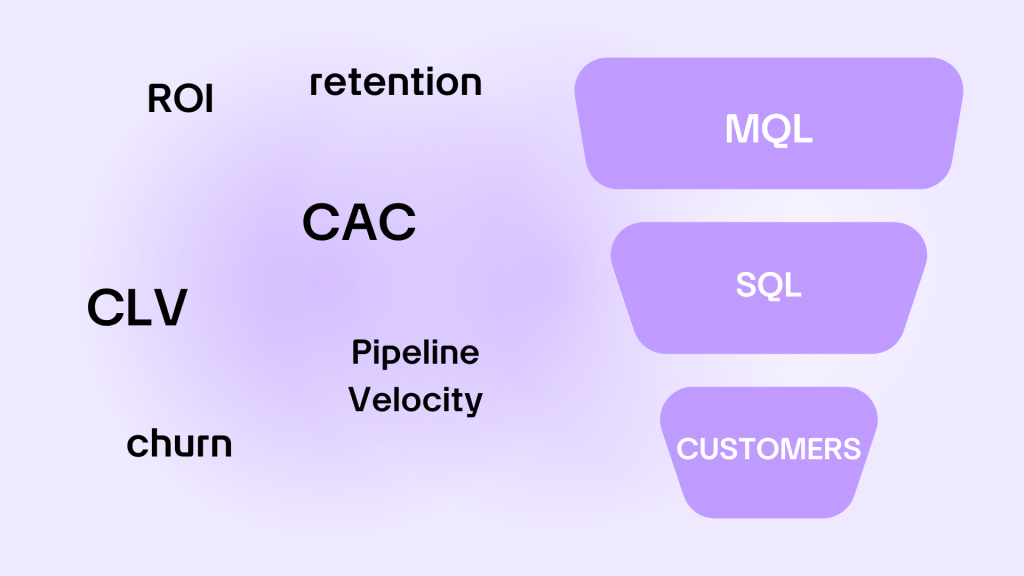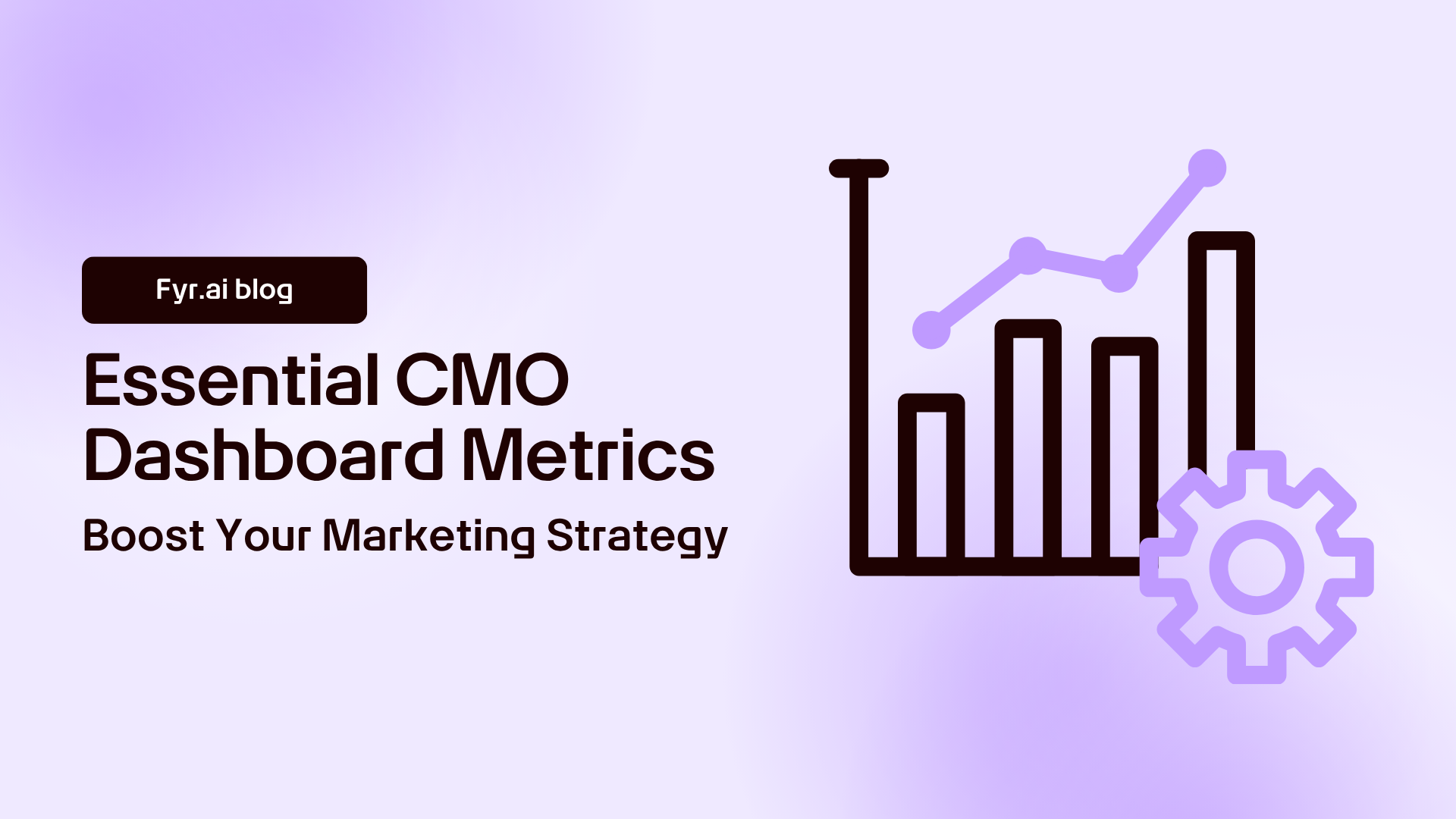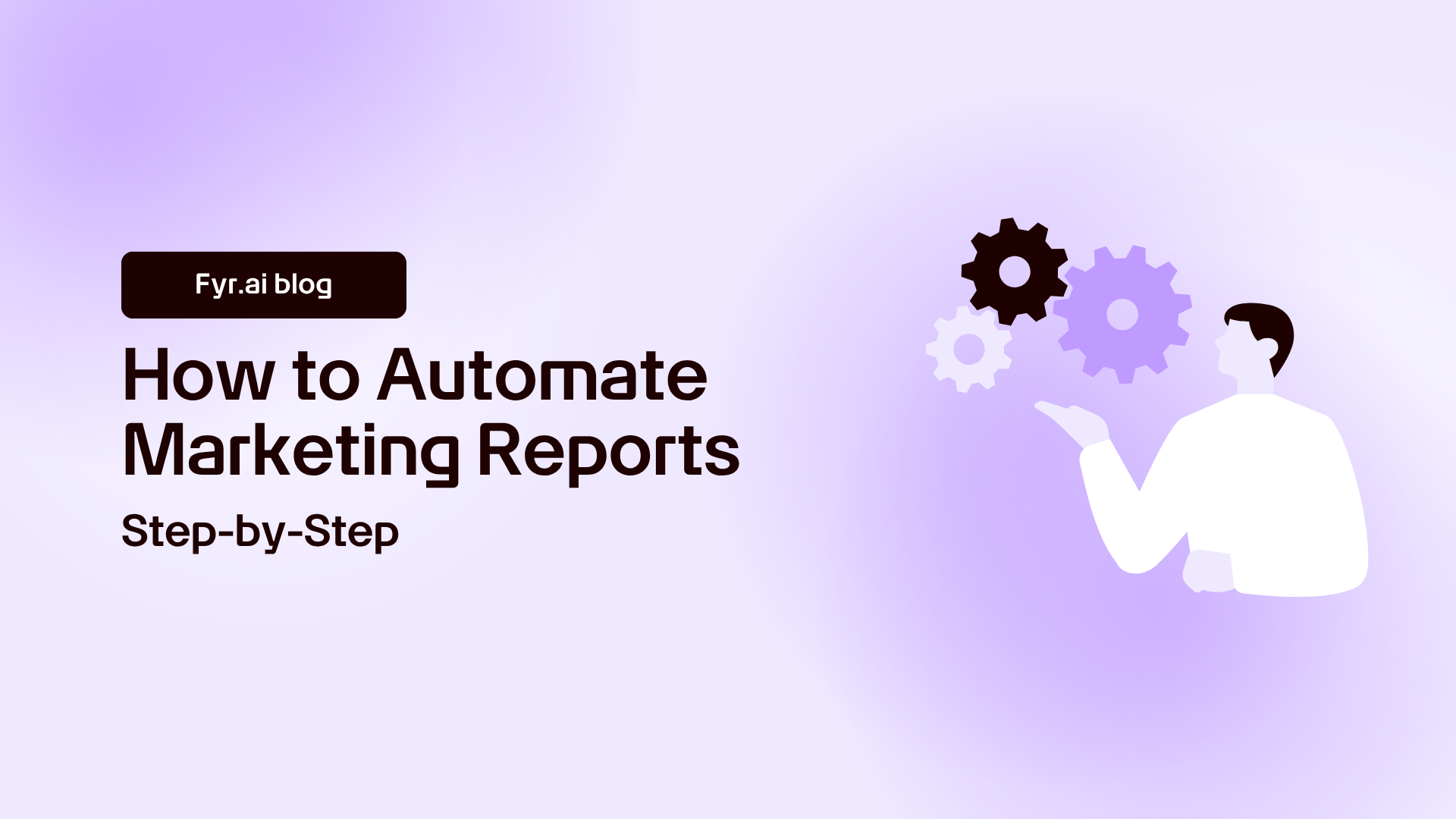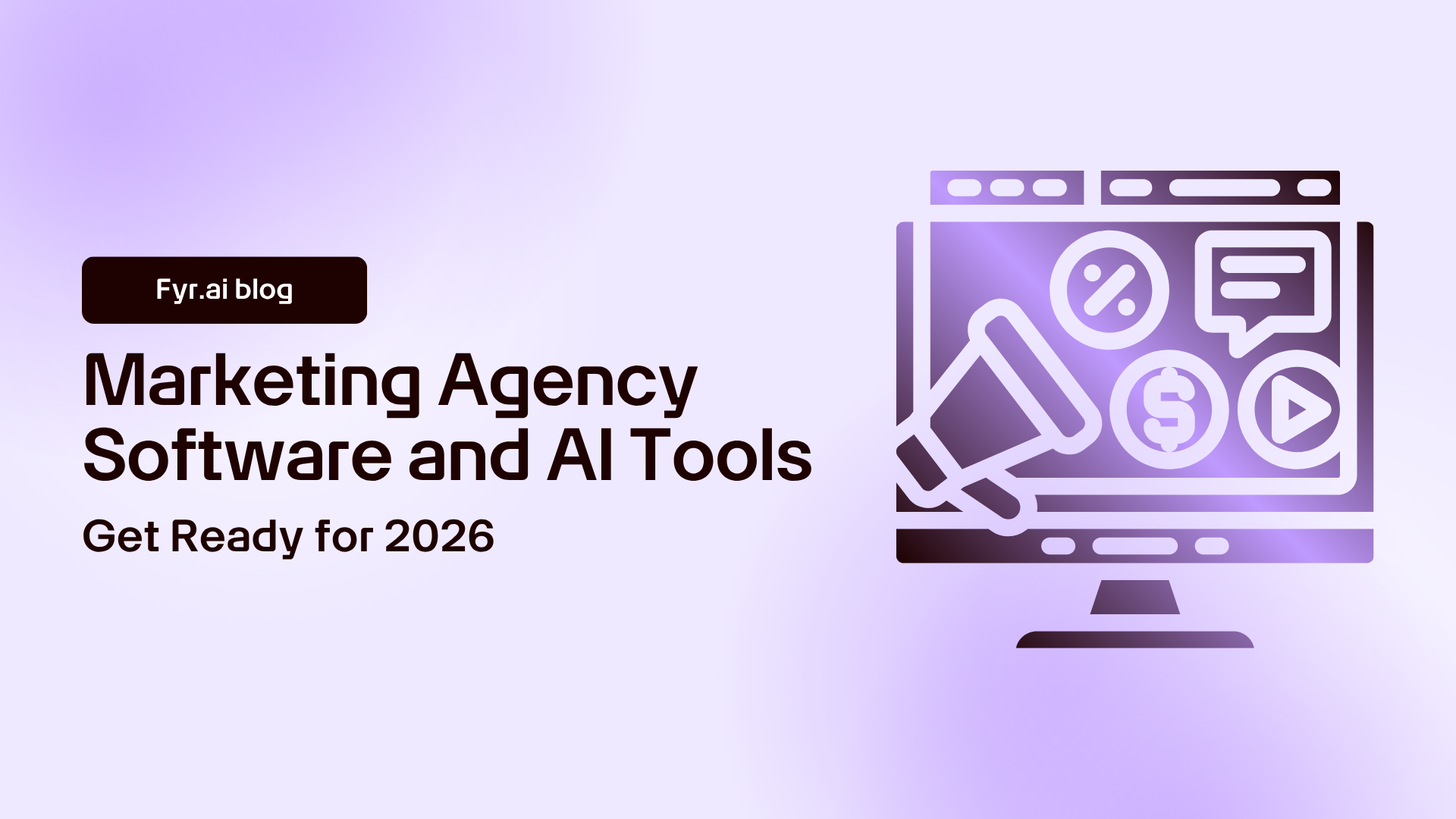I’ve seen firsthand the evolution of the CMO’s role. In 2026, there’s a greater necessity than ever to prove marketing’s revenue contribution. An excellent marketing strategy isn’t only about brilliant campaigns anymore – it’s about analyzing data, noticing patterns and aligning effort with business objectives.
That’s when dashboards are the Chief Marketing Officer’s superpower. For example, a CMO dashboard might display real-time data on brand health, customer engagement and campaign performance, all organized in a visually intuitive layout. It will help you to streamline the process by providing a customizable framework to consolidate key marketing metrics, making it easier to organize data and support data-driven decision-making.
Instead of getting lost in spreadsheets, the greatest dashboards provide instant clarity by utilizing AI-infused insight and advanced marketing analytics to bring only the most crucial things to the surface. Assembling key marketing metrics in one place will help CMOs gain an instant view of patterns, fine-tuned performance and faster decisions that deliver customer acquisition as well as sustainable growth.
Table of Contents
Introduction to CMO Dashboards
A Chief Marketing Officer (CMO) dashboard is the cornerstone of 2026 marketing leadership. It serves as a centralized platform where marketing leaders can monitor and manage marketing performance across multiple marketing channels, all in one place. By bringing together key metrics and campaign performance data, a CMO dashboard empowers chief marketing officers to make data-driven decisions that align marketing efforts with overarching business objectives.
With a CMO dashboard, marketing leaders gain valuable insights into every aspect of their marketing strategies – from customer acquisition and revenue growth to overall campaign performance. This holistic view enables them to identify trends, spot opportunities and quickly address challenges, ensuring that marketing efforts are always optimized for maximum impact. By providing up-to-date, actionable data, CMO dashboards help marketing teams stay agile, respond to market changes, and maintain a competitive advantage.
Ultimately, the primary goal of a CMO dashboard is to provide a clear understanding of how marketing activities contribute to business growth. By leveraging these insights, marketing leaders can make informed decisions that drive customer acquisition, boost revenue and continuously improve marketing performance.

Understanding Customer Acquisition
Customer acquisition is one of the most critical pillars of marketing strategy. If you’re a CMO in 2026, you already know that winning new customers isn’t just about lead generation – it’s about efficiency, sustainability and long-term value. Evaluating the quality and progression of marketing qualified leads is essential, as these leads play a key role in ensuring acquisition efforts result in real sales opportunities and revenue growth within your organization’s sales pipeline.
Why Customer Acquisition Cost Matters
Customer Acquisition Cost (CAC) remains the go-to and a critical metric for marketing leaders to evaluate efficiency. It reveals whether your campaigns are generating customers at a sustainable cost or burning through budget without results.
A healthy CAC means you’re acquiring customers at a price that leaves enough margin for profit. But when CAC spikes, it’s often a sign of:
overspending on low-performing channels;
weak targeting or irrelevant messaging;
inefficient lead-to-customer conversion.
By tracking CAC in real-time on a CMO dashboard, marketing leaders can identify red flags before they become costly problems.
Beyond CAC: Lifetime Value and Profitability
While CAC is essential, it’s only part of the customer acquisition story. CMOs must connect it with pipeline velocity, conversion rates and customer satisfaction to see the full picture. CAC, CLV and related data are essential metrics for understanding acquisition profitability.
For example:
a campaign with a slightly higher CAC may still be profitable if those customers have a higher lifetime value (CLV);
a low CAC campaign might look strong on paper, but if those leads churn quickly, it’s not truly sustainable.
This is where modern dashboards change the game.
Pipeline Velocity and Lead Conversion
Pipeline velocity is a metric to track alongside CAC. It measures how quickly leads move through the funnel into paying customers. Tracking metrics like pipeline velocity and conversion rates is essential to optimize the funnel and ensure marketing effectiveness.
If your CAC is stable but your pipeline slows, it signals a bottleneck in either sales alignment or nurturing. Dashboards help CMOs visualize these trends instantly, so teams can:
spot friction points in the funnel;
improve lead scoring models;
align marketing and sales more effectively.
Customer Insights that Drive Smarter Acquisition
The most successful acquisition strategies don’t just focus on numbers – they focus on people. Dashboards that surface customer demographics, engagement behavior and satisfaction trends help CMOs fine-tune campaigns to attract the right audience. Tracking marketing touchpoints provides valuable insights into how prospects interact with your brand across different channels, enabling more effective audience targeting.
Sales Qualified Leads (SQLs)
SQLs are where acquisition meets conversion. They represent prospects vetted by marketing and ready for sales. Collaboration between marketing and sales teams is crucial at this stage to ensure SQLs are effectively converted into customers. Tracking SQLs ensures marketing isn’t just generating leads, but the right leads. Dashboards that highlight SQL quality help refine campaigns and keep both teams aligned.
The Link Between Acquisition and Retention
A point I always emphasize: acquisition and retention are two sides of the same coin. Sustainable growth comes from attracting the right, not just more customers. By combining acquisition metrics with retention insights, CMOs can prioritize long-term profitability instead of short-term wins. The marketing team is responsible for integrating these acquisition and retention metrics to ensure strategies support sustainable growth.
Measuring Campaign Performance
Great campaigns aren’t just creative – they’re measurable. In 2026, the ability to track, analyze and act on campaign performance data is what separates growth-focused marketing teams from those stuck in guesswork. A marketing dashboard consolidates these key metrics into a single, visual platform, making it easier to monitor performance, measure ROI and support data-driven decision-making.
The Role of Key Performance Indicators (KPIs)
Campaign success starts with the right KPIs. Depending on your goals, these may include:
website traffic – an indicator of brand visibility and reach;
conversion rates – showing how effectively campaigns drive action;
social media engagement – revealing customer interest and sentiment;
Return on Ad Spend (ROAS) – highlighting profitability of paid campaigns.
These are key marketing KPIs essential for executive reporting and campaign optimization.
Tracking these KPIs in isolation can be misleading. That’s why CMOs need a dashboard view that connects the dots – showing not just what’s happening, but why.
Real-Time Insights with CMO Dashboards
The biggest advantage of dashboards is speed. Instead of waiting for end-of-month reports, CMOs get real-time visibility into campaign performance. With up-to-date data, they can make timely adjustments to campaigns, ensuring decisions are based on the most current information. This means they can:
detect underperforming campaigns early;
reallocate budget to high-performing channels;
test and optimize messaging on the fly.
Fyr’s dashboards go beyond traditional reporting by automating insights. They don’t just tell you which campaign underperformed – they help you find out where to adjust for better results.
Campaign Performance Metrics
Alongside CAC and CLV, you can track metrics such as:
Sales Qualified Leads (SQLs) – the bridge between marketing and sales success.
Conversion Rate – the percentage of visitors who take a desired action, whether it’s a purchase or sign-up.
Monitoring these indicators gives clarity on campaign ROI and future opportunities. By analyzing these metrics in real time, CMOs can optimize campaigns to improve effectiveness and maximize ROI.
Predictive Analytics: Anticipating What’s Next
Predictive analytics, powered by AI, helps CMOs look forward, not just backward. By forecasting performance trends, you can anticipate shifts in customer behavior and adjust strategies before competitors react. Predictive analytics can also provide valuable insights to anticipate market shifts and inform strategy.
Sales and Marketing Alignment
One of the toughest challenges for CMOs is aligning sales and marketing. Dashboards make this easier by creating a shared truth between both teams.
When sales sees where leads are coming from, and marketing sees how those leads progress through the pipeline, collaboration becomes natural. Dashboards support and enhance the sales process by providing visibility into lead progression and deal closing activities, helping both teams streamline their efforts. That means no more disputes over attribution and more focus on converting qualified leads into customers.
Web Analytics and Marketing Influence
Every marketing leader needs to understand how their digital presence drives growth. Web analytics provides that foundation, but marketing influence goes deeper. Engagement on social channels, brand mentions across platforms, and even sentiment trends all reveal whether your brand is shaping the market. Tracking social media campaigns alongside web analytics is crucial for measuring their impact on website traffic, engagement, and conversions.
By combining web analytics with influence metrics, CMOs can measure both direct ROI and brand equity. Fyr’s dashboards make this holistic view effortless, surfacing insights that would otherwise take days of reporting work.
Marketing Budget and ROI
Budget management in 2026 is about agility. Instead of setting a yearly spend and hoping for the best, CMOs need to continuously reallocate resources through marketing initiatives to high-performing campaigns. Tracking marketing spend is crucial for maximizing ROI, as it allows for better measurement, analysis and optimization of marketing budgets.
Dashboards now provide a clear link between spend and ROI, showing which investments drive revenue growth and which drain resources.
Customer Lifetime Value and Marketing Strategy
If CAC tells you how much it costs to bring in a customer, customer lifetime value (CLV) tells you how much that customer is worth. It’s one of the most powerful metrics to guide strategy. Dashboards that surface CLV allow you to tailor marketing campaigns around high-value segments, focusing on nurturing loyalty and retention. Understanding CLV also helps CMOs evaluate the long-term impact of their marketing investments, ensuring resources are allocated to strategies that maximize overall value.
Google Analytics 4 and Data-Driven Decision Making
Google Analytics 4 remains a cornerstone of digital marketing, but it can be overwhelming without context. That’s why the best dashboards integrate GA4 data into a simplified, action-ready view.
By combining Google Analytics with AI-driven insights, CMOs can see trends at a glance and make confident, data-driven decisions. It supports making informed marketing decisions by providing comprehensive metrics and actionable insights in one place. The dashboards you should trust don’t just aggregate data – they provide clear visuals, automated insights and suggested next steps.
Choosing the Right Tools for Your CMO Dashboard
Selecting the best tools and platforms for your CMO dashboard is crucial for effective data analysis and strategic marketing initiatives. A CMO marketing dashboard offers real-time data visualization and supports strategic decision-making by providing marketing leaders with actionable insights, campaign monitoring, budget management, and executive reporting. Business intelligence platforms provide advanced data analysis and visualization capabilities, which are essential for navigating complex marketing data.
Customizable dashboards allow for the integration of specific KPIs that align with the organization’s marketing objectives. Choosing the right tools allows CMOs to make decisions by analyzing key performance metrics and trends across various marketing channels.
Conclusion and Future of CMO Dashboards
CMO dashboards have become indispensable for marketing leaders seeking to measure marketing performance, track key metrics and make data-driven decisions that fuel business growth. As marketing strategies evolve and the digital landscape becomes more complex, the ability to optimize marketing efforts and improve customer acquisition will increasingly depend on the insights provided by robust CMO dashboards.
Looking ahead, the future will be shaped by rapid advancements in data analysis and artificial intelligence. These technologies will enable marketing leaders to gain even deeper insights into customer behavior, preferences and needs, transforming raw data into real-time insights and predictive analytics. As a result, CMO dashboards will offer personalized marketing campaign recommendations, helping marketing teams stay ahead of emerging trends and make more informed decisions.
Summary
Marketing leadership in 2026 demands clarity, agility and proof of impact. CMO dashboards provide all three. They transform complex marketing data into actionable insights, helping leaders:
optimize acquisition strategies;
measure and improve campaign performance;
align sales and marketing efforts;
maximize ROI and customer lifetime value.
What makes a great CMO dashboard in 2026? And why is the Fyr the platform for you.
Automated insights
No more spending hours (or days) pulling reports. The best dashboards use AI to gather and analyse data for you, so you can focus on the big picture. With Fyr, it happens automatically. Every morning, every week, so you always stay up to date on your marketing data.Clarity at one glance
You shouldn’t need 50 tabs open. A great dashboard shows you what matters. Simple visuals, clear trends and no fluff. Fyr’s dashboards are designed to make complex marketing results feel effortless.From metrics to action
Numbers are nice, but actions are what drive growth. The modern CMO dashboard tells you what’s working and what’s not. With Fyr, you don’t just track performance, you act on it.All your channels in one place
Paid, organic, social media, CRM and sales. The result? A single version of the truth that helps you move faster and smarter. No more guessing.
With Fyr’s dashboards and reports, you don’t just see results, you understand them. You know where to double down, what to fix and how to get ahead. Unlock your marketing team’s full potential with dynamic dashboards. Our solution ensures you with comprehensive and up-to-date insights into marketing!
CMO Dashboard: Frequently Asked Questions
What is a CMO dashboard?
A CMO dashboard is essentially a tool that helps you track important metrics and insights, ensuring your marketing strategies align well with your business goals. It’s all about making informed decisions for better results.
Why is tracking Customer Acquisition Cost (CAC) important?
Tracking Customer Acquisition Cost (CAC) is crucial because it shows you how much you’re really spending to gain new customers, allowing you to fine-tune your marketing strategy for better efficiency. Knowing your CAC helps ensure you’re investing wisely to grow your business.
How does Marketing ROI help in decision-making?
Marketing ROI shows you which campaigns are truly profitable, making it easier to focus your resources on the ones that bring the best returns. This way, you can make smarter decisions that enhance your overall marketing strategy.
What is the significance of real-time data in a CMO dashboard?
Real-time data is crucial for a CMO dashboard because it offers instant insights that enable quick reactions to market changes, ultimately boosting efficiency and decision-making.
How can predictive analytics benefit marketing strategies?
Predictive analytics can really supercharge your marketing strategies by forecasting future trends and customer behavior, allowing you to tailor your approach for better results. It’s all about staying ahead of the game!
Ready to Get Superpowers?
Marketing doesn’t have to be complicated. With Automagic Marketing, you gain clarity, speed and confidence. Fyr’s platform combines generative AI, predictive analytics, and a streamlined martech stack into one seamless experience – so you can spend less time chasing metrics and more time driving growth.
We don’t just optimize campaigns – we give your team superpowers.
👉 Book a demo today and see how Automagic Marketing can transform your business. The future of marketing is already here. Let’s build it together.







